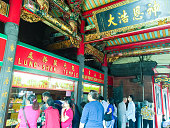Gentlemen’s Club
페이지 정보

본문
Gentlemen’s Club
Why is it referred to as Boys and Girls club?
The time period "Boys and Girls Club" typically refers to youth organizations that present recreational, educational, and social alternatives for children and teenagers. However, when discussing the time period in relation to a Gentlemen's Club, 부산부달 it could evoke a special understanding.

Reasons for the Terminology
- Tradition: The phrase "Boys and Girls" emphasizes inclusivity and camaraderie, mirroring the social setting sometimes found in Gentlemen's Clubs.
- Socialization: Just as Boys and Girls Clubs encourage social skills and bonding among youth, Gentlemen's Clubs concentrate on networking and social interaction among adults.
- Stereotypes: The name reflects traditional gender roles, the place "boys" and "women" symbolize the distinct social experiences typically portrayed in such institutions.
In essence, while the names could suggest a playful connection, they fundamentally tackle different aspects of socialization and community constructing across age teams.
What is a modern-day gentleman?
A modern day gentleman embodies a blend of traditional values and up to date ideals. He is characterized by a robust sense of integrity, respect for others, and an understanding of the importance of manners in social interactions.
Style and Presentation
Style performs a significant function within the modern gentleman's persona. He pays attention to his personal grooming and clothes decisions, opting for well-fitted apparel that displays his character while remaining acceptable for the event. A tailor-made swimsuit for formal events or good casual attire for social gatherings showcases his commitment to wanting polished.
Cultural Awareness
A true gentleman is culturally conscious and appreciates various perspectives. He engages in significant conversations, listens actively, and exhibits empathy towards the experiences of others. This attribute enhances his presence in social environments, such as Gentlemen’s Clubs, which regularly function venues for networking and intellectual discussions.
Social Etiquette
In the context of a Gentlemen’s Club, the fashionable day gentleman adheres to a set of social etiquettes. He understands the nuances of etiquette, such as proper dining manners, well mannered conversation, and the importance of discretion in personal and skilled issues. This creates an environment of respect and camaraderie amongst club members.
Personal Growth and Responsibility
The trendy gentleman values private progress and steady learning. He seeks opportunities to increase his data, whether or not through literature, travel, or new experiences. Additionally, he takes duty for his actions, whether or not in his private life, profession, or social engagements. This accountability is a hallmark of his character.
Community Engagement
Lastly, a modern gentleman typically engages along with his group, collaborating in charitable occasions and initiatives. He understands the significance of giving back and strives to make a optimistic impression on the world round him, further exemplifying the ethos of the contemporary gentleman.
When did Gentlemen's Club start?
The concept of Gentlemen's Clubs originated within the early 18th century in England. These unique institutions catered primarily to rich men, offering an area for socializing and networking.
The Early Development
The first recognized Gentlemen's Club, White's, was established in 1693. Others adopted within the subsequent decades, making a development that led to the expansion of comparable golf equipment throughout London and beyond.
Evolution Over Time
Throughout the 19th century, Gentlemen's Clubs became more refined, usually related to aristocracy and influential figures, solidifying their status in British tradition.

- 이전글Why Some Individuals Virtually All the time Make/Save Money With How Do Women Orgasm 24.12.25
- 다음글Burlesque Show 24.12.25
댓글목록
등록된 댓글이 없습니다.